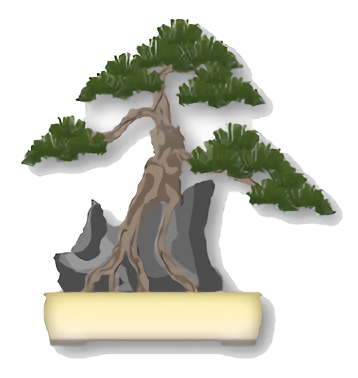Root-over-Rock "Sekijoju", "Ish Seki"

The Root-over-Rock "Sekijoju" style of bonsai trees is a way of creating a naturalistic and dramatic image of a tree growing on a rocky terrain. In this style, the roots of the tree wrap around a rock at the base of the trunk, following its contours and crevices, and then reach the soil below. The rock is an integral part of the composition and should be large enough to balance the tree and show its struggle. The roots should be firmly attached to the rock, without crossing or leaving gaps, and should gradually thicken over time to show age. This style can be applied to various species of trees, such as maples, pines, beeches, crab apples and pomegranates. It takes time and patience to develop a root-over-rock bonsai, as the roots need to grow and adapt to the shape of the rock. The result is a stunning and realistic representation of nature's resilience and beauty.
Ish Seki bonsai are bonsai trees that are planted on rocks, imitating the natural scenery of trees growing in harsh environments. The term Ish Seki means "root-over-rock" in Japanese, and it is one of the styles of bonsai art. Ish Seki bonsai can create a dramatic impression of strength and resilience, as the trees have to struggle to find nutrients and water in the cracks of the rocks. Some of the common tree species used for Ish Seki bonsai are junipers, azaleas, hinoki cypress, and buxifolio. Ish Seki bonsai require careful attention to the roots, soil, and watering, as they are more vulnerable to drying out than other bonsai.